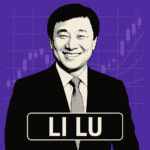TSMC (NYSE: TSM)
Q1 2025 Financial Analysis | April 22, 2025
Executive Summary
Taiwan Semiconductor Manufacturing Company (TSMC) has reported its financial results for the first quarter of fiscal year 2025, ended March 31, 2025. The world’s leading semiconductor foundry delivered strong year-over-year growth, with revenue increasing 41.6% to NT$839.25 billion (US$25.53 billion) and net income rising 60.3% to NT$361.56 billion. This report analyzes TSMC’s financial performance, technology mix, and future outlook based on the company’s latest quarterly report.
Q1 2025 Highlights
Financial Performance
TSMC reported impressive year-over-year growth in Q1 2025, with revenue increasing 41.6% to NT$839.25 billion and net income rising 60.3% to NT$361.56 billion. While there was a slight quarter-over-quarter decline due to smartphone seasonality, the company continues to benefit from strong AI-related demand. The substantial improvement in profitability metrics, with net income growing faster than revenue, demonstrates TSMC’s operational efficiency and pricing power as demand for advanced semiconductor technologies remains robust.
Technology Mix & Revenue Drivers
Technology Breakdown
Revenue Drivers
TSMC’s advanced technologies (7nm and below) continued to dominate its revenue mix, accounting for 73% of total wafer revenue in Q1 2025. The 3nm and 5nm nodes together represented 58% of wafer revenue, highlighting the company’s leadership in cutting-edge semiconductor manufacturing processes. The growth in 3nm adoption is particularly significant as it represents the most advanced technology currently in mass production, enabling the development of more powerful and energy-efficient chips for AI, high-performance computing, and premium mobile applications.
Margin Analysis
TSMC maintained its industry-leading profitability in Q1 2025, with gross margin at 58.8%, operating margin at 48.5%, and net profit margin at 43.1%. These robust margins reflect TSMC’s technology leadership, operational excellence, and the premium pricing power associated with its advanced manufacturing processes. The company’s ability to sustain these high margins while continuing to invest heavily in capacity expansion and R&D underscores its competitive advantage and strong market position in the semiconductor foundry industry.
Q2 2025 Guidance & Outlook
Q2 2025 Guidance
Business Outlook
TSMC’s guidance for Q2 2025 points to continued strong performance, with expected revenue between US$28.4 billion and US$29.2 billion, representing sequential growth from Q1. The company anticipates gross margin between 57% and 59% and operating margin between 47% and 49%, indicating stable profitability. Management highlighted strong demand for TSMC’s industry-leading 3nm and 5nm technologies as key drivers for the second quarter, while acknowledging uncertainties related to potential tariff policy impacts. TSMC is closely monitoring these factors and managing its business prudently.
Business Drivers & Strategy
Growth Drivers
Challenges & Focus Areas
Management Perspective
“Our business in the first quarter was impacted by smartphone seasonality, partially offset by continued growth in AI-related demand. Moving into second quarter 2025, we expect our business to be supported by strong demand for our industry-leading 3nm and 5nm technologies. While we have not seen any changes in our customers’ behavior so far, uncertainties and risks from the potential impact from tariff policies exist. We will continue to closely monitor the potential impact on the end market demand, and manage our business prudently.”
— Wendell Huang, Senior VP and Chief Financial Officer of TSMC
Conclusion
Performance Highlights
- Revenue growth of 41.6% YoY to NT$839.25 billion
- Net income increase of 60.3% YoY to NT$361.56 billion
- EPS growth of 60.4% YoY to NT$13.94
- 73% of wafer revenue from advanced technologies (7nm and below)
Strategic Position
- Continued leadership in advanced semiconductor manufacturing
- Strong positioning in AI chip production
- Robust margins reflecting technology advantage
- Prudent management approach to market uncertainties
Summary
TSMC delivered exceptional year-over-year growth in Q1 2025, demonstrating its critical position in the global semiconductor supply chain and its ability to capitalize on increasing demand for advanced chip technologies. Despite seasonal weakness in smartphone-related demand, the company’s strong performance in AI-related segments and its commanding position in leading-edge process nodes underpin its robust financial results. With a positive outlook for Q2 2025 and continued strength in advanced technology demand, TSMC remains well-positioned to maintain its industry leadership, though management acknowledges potential risks from trade policies that require ongoing monitoring.






